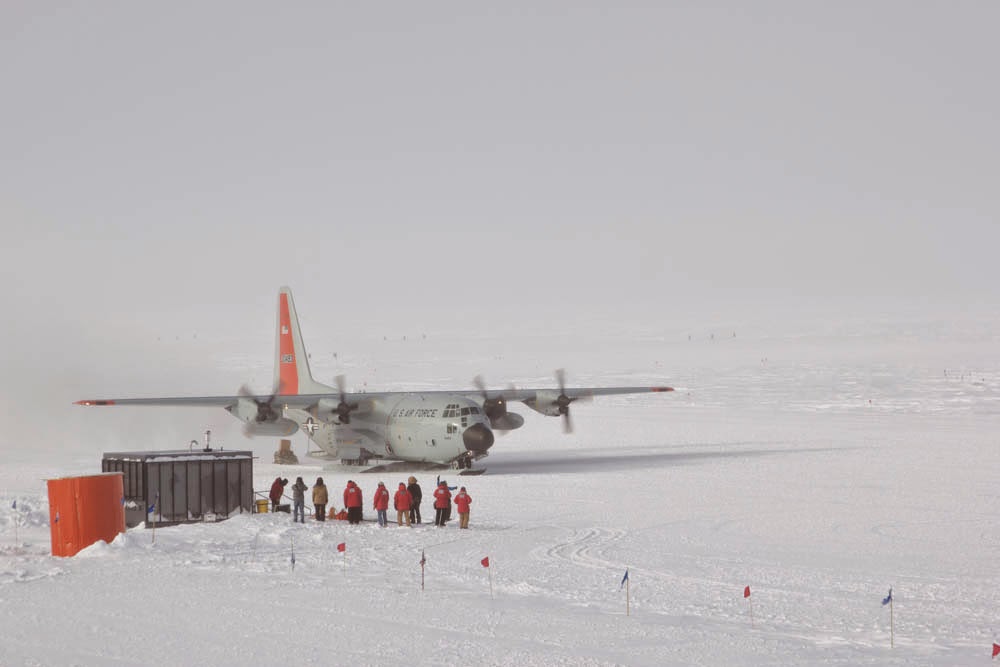This Week in Pole brings changes, station opening, the official arrival of the summer season, new people... none of which have to be dealt with for long (fortunately) as it also means us winter-overs will soon (or already are) leaving the ice.
The first Herc of the summer finally reaches the Pole
New people and cargo are all brought to the South Pole from McMurdo via LC-130 (Hercules) planes operated by the Air National Guard. This year they set out from their base in New York with five planes, and subsequently left a trail of broken planes on their route to Christchurch/McMurdo. A week ago there wasn't even a functioning Herc on the continent. Now there are two. Because of a mix of these mechanical failures and bad weather, we received our first plane on 11/6, as opposed to 11/1. This backs up all the replacements and turnover for the summer season, and means many people may be getting out of there later than planned.
New people on station means everything is changing rapidly as the summer season has officially started. But it's interesting to see just how the station itself has changed over the course of the winter. For one, large drifts develop over the course of the winter which must be plowed away during the summer.
"MAPO mountain"
A two-story drift develops around MAPO, a building in the dark sector that houses the machine shop and SPUD/Keck telescope. The drift is actually almost two stories tall, the windows you see there are the second story of the MAPO building, and the doors on the lower level are obscured by central smaller drift.
Drift upwind from the station
You can also see a drift develop upwind from the main station. The station is supposed to prevent drifts from forming under the station, and as you can see the area under the station is relatively flat. Apparently in 2012 this drift had hardly formed at all, but because not enough personnel are sent down in summer to properly clear it, the drift has been getting worse each year after that.
It is also interesting how our interactions have changed over the winter. At the start of the winter everyone was very friendly to each other, mostly because you don't want to start off on a bad footing with someone you will spend the next 9 months with. Of course, over time us winter-overs learned what truly terrible human beings each other are. Conflicts inevitably develop, resulting in hate, which festers over the course of the winter until it blossoms into spite - the purest of human emotions. Still, open conflict is rare - no one wants to rock the boat too much while everyone still has months to go. However, the final week before people depart, everyone will shortly fly off the ice and soon enough practically be dead to each other, allowing a unique opportunity to completely tell someone off right before parting ways. It's a beautiful thing.
At the end of winter, successful winter-overs are all given the Antarctic Service Medal. Anyone who spends 15-30 days below 60 degrees South in support of the USAP receives one of these, but winter-overs receive an extra "wintered over" bar.
Shiny
Other snowdrifts:
- I avoid the new folks by hiding in my room. Every new named learned is a personal defeat.
- In addition to LC-130s, DC-17s are also used for flights in between Christchurch and McMurdo. The Hercs also service larger field camps and other stations nearby McMurdo.
- The first herc also brought everyone their first mail, and in a few flights some of our mail should finally get out.
- The crew that came in early on the Basler managed to fix the Rodwell, so we are now on full water usage!
- No, no one at pole voted because our mail-in ballots wouldn't reach the states in time
Next Week in Pole: All the Hercs on continent cease to function










